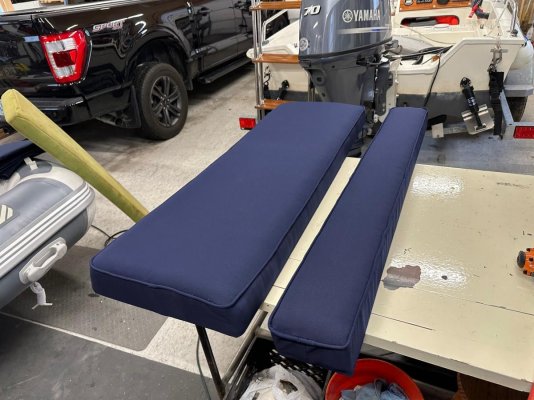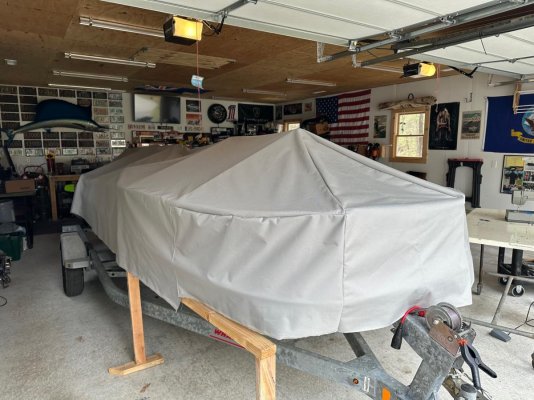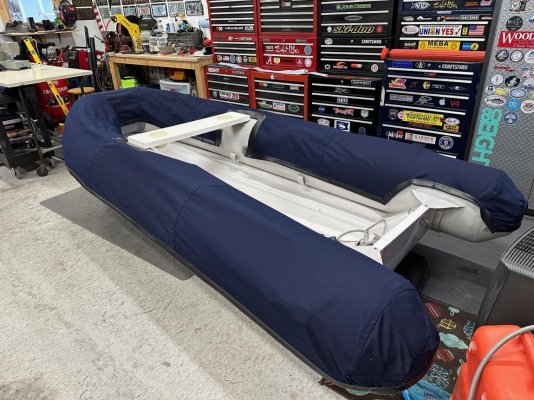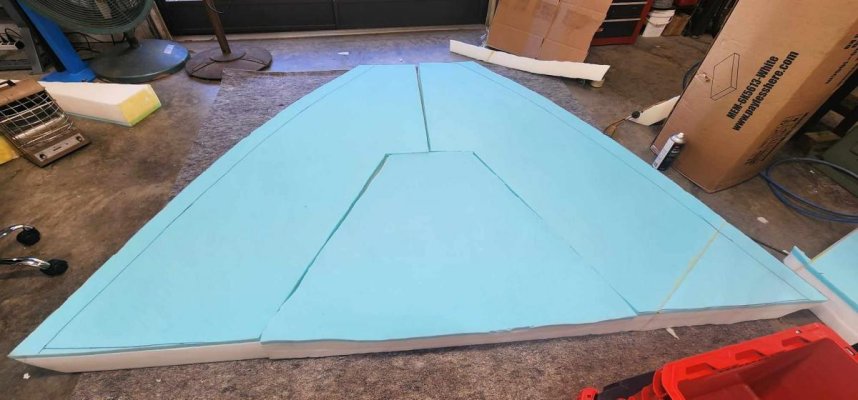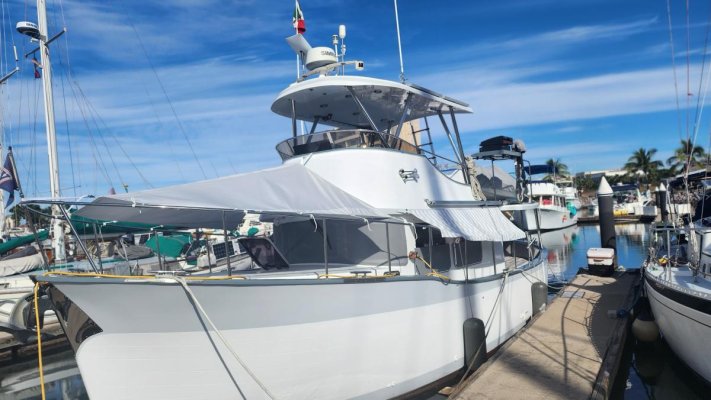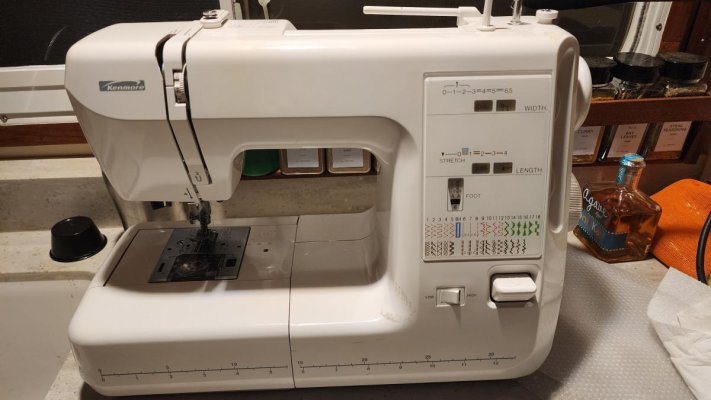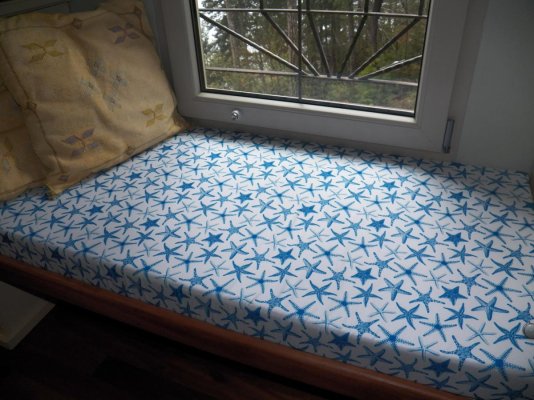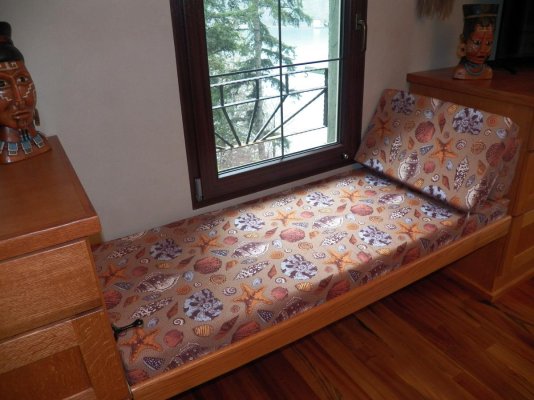Hyperion
Senior Member
- Joined
- Sep 26, 2022
- Messages
- 157
- Vessel Name
- Hyperion
- Vessel Make
- Grand Banks Heritage Classic 42
I'm in the same boat as OP. I just paid $1600 to have a freaking bimini canvas made for my GB42. That is crazy. I ordered a used sailrite and plan to do all the other canvas items on board myself. Dingy cover, window covers, davit cover, etc, etc. Paid $350 for it. And by me I mean my wife will make them. She had to choose, brightwork or canvas work. She chose wisely. I was hoping the feminist in her would go for the "manly" brighwork so I could sew canvas inside, with the AC on and a drink but my plan failed.

